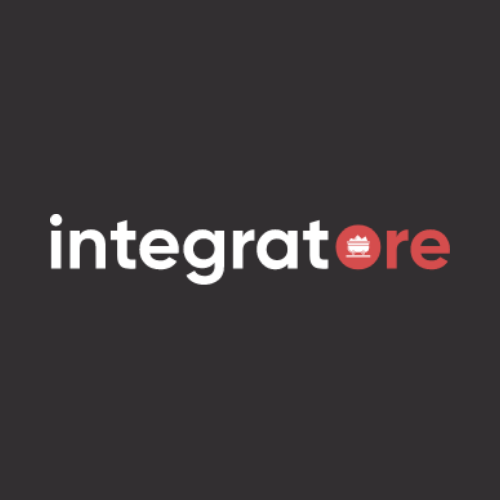Cyber security is the application of technologies, methods, and controls to defend plans, networks, programs, devices, and data from cyber-attacks. It strives to lessen the threat of cyber-attacks and safeguard against the unauthorized exploitation of systems, networks, and technologies.
Cyber security can be categorized into five distinct types:
- Critical infrastructure security.
- Application security.
- Network security.
- Cloud security.
- Internet of Things (IoT) security
Global data and in-depth analysis
In today’s connected world, everyone benefits from advanced cyber defence programs. The present cyberspace is intermittently connected, which leaves pockets of vulnerability leading to exploits and breaches by the deplorable. It is estimated that cybercrime damages will exceed $6 trillion by 2021. The alarm bell has been rung and every sector is intuitively investing in cybersecurity.
A successful running module for cybersecurity has layers of protection spread across programs, networks, data, and computers. If a cybersecurity module is integrated into an organization, technology, people and processes should all seamlessly complement each other to provide a unified front for effective threat management.
Need for Cyber Security:
The costs of cyber security breaches are rising. In 2021, cybercrime cost the world $6 trillion. By 2025, these costs will increase to $10.5 trillion. Cybercrime is an increasingly serious problem, and to address it, strong cyber security is critical. There is even non-financial damage to be reckoned such as reputational harm.
Cyber-attacks are increasingly sophisticated and continue to grow in them, with attackers using an ever-expanding variety of tactics. These include social engineering, phishing, malware, and ransomware. Cyber security is a critical issue so, new regulations and reporting requirements make cyber security risk oversight a challenge. It needs commitment from the management that its cyber risk procedures will decrease the chance of attacks and restrict financial and functional results.
Cyber-Crime is a big business as per its hidden costs, a 2020 study carried out by McAfee and the CSIS (Centre for Strategic and International Studies), established on data compiled by Vanson Bourne, the world economy falls more than $1 trillion (approximately £750 billion) each year. The political, ethical, and social inducements can also push attackers.
It is a mistake to accept that you are of no interest to cyber attackers. Everyone who is connected to the Internet needs cyber security. This is due to a lot many cyber-attacks being automated and seeking to influence standard vulnerabilities instead specific websites or organizations.
Common Cyber Threats include:
- Malware- The malware like ransomware, botnet software, RATs (remote access Trojans), rootkits and boot kits, spyware, Trojans, viruses, and worms.
- Backdoors- allow remote access.
- Formjacking- It inserts malicious code into online forms.
- Cryptojacking- Installs illicit cryptocurrency mining software.
- DDoS (distributed denial-of-service) attacks- These flood servers, systems, and networks with traffic to hit them offline.
- DNS (domain name system) poisoning attacks- These compromise the DNS to pivot traffic to malicious websites.
Types of Cyber Security:
- Critical Infrastructure of Cyber Security: These are often more vulnerable to attack than others because SCADA (supervisory control and data acquisition) systems often rely on older software.
- Network Security: This involves addressing vulnerabilities affecting your operating systems and network architecture, including servers and hosts, firewalls and wireless access points, and network protocols.
- Cloud Security: It is concerned with securing data, applications, and infrastructure in the Cloud.
- IoT (Internet of Things) Security: IoT security concerns ensure smart devices and networks that are connected to the IoT.
- Application Security: It involves addressing vulnerabilities resulting from insecure development processes in the design, coding, and publishing of software or a website.
According to IBM, 77% of organizations don’t have a Security Incident Response Plan, and some companies take over 6 months to even detect a breach. During this period, attackers can do everything from stealing data and conducting surveillance to damaging systems and asking for ransom.
Cyber Security Vs Information Security:
Cyber security is often confused with information security. Cyber security concentrates on defending computer systems from unauthorized permits or being otherwise damaged or made inapproachable.
Information security is a wider variety that saves all information assets, whether on paper or digitally.
The Legal Need: The GDPR (General Data Protection Regulation) and DPA (Data Protection Act) 2018 require organizations to implement appropriate security measures to protect personal data. Otherwise, you risk substantial fines. The GDPR gives data subjects more control over how their data is processed and places a range of obligations on organizations that process and control the processing of personal data. The General Data Protection Regulation (GDPR) is a rule that controls how organizations process private data. GDPR also stipulates the right to get personal data erased.
Challenges of Cyber Security & How to overcome it:
Ransomware Evolution:
Ransomware attacks depend on encryption technology to avert access to files. Throughout the 1990s, as encryption procedures persisted to move, Ransomware attacks even became more refined and unattainable to break. According to research, more than 95% of Ransomware attackers cashed out their Bitcoin payments through Russia’s now-defunct BTC-e exchange.
The only mode to stop a Ransomware attack is to be prepared before it happens. That needs forming regular offline backups on a device that never stays linked to the internet.
Blockchain Revolution:
Anyone can join the Blockchain revolution, including your business. Consider using Blockchain to protect:
- Critical and sensitive data
- Cryptocurrency and other smart assets
- Smart contracts
- Businesses with employees trained in technology may have the capability to build their Blockchain.
The Internet has numerous free, open-source platforms for anyone looking to create a database. However, coding an in-house Blockchain requires advanced skills and knowledge so, big businesses will handle Blockchain security for you.
AI (Artificial Intelligence) Expansion:
Artificial intelligence is making its existence widely across a wide range of industries, organizations, and government sectors. While AI has been used in cybersecurity for quite some time, the future of technology will obtain many more applications of AI for our digital protection. As Artificial Intelligence fetches smarter, its power to determine chances will enhance as well.
IoT Threats:
An attacker can contaminate an IoT device with malware via an unprotected port or phishing scams and co-opt it into an IoT botnet utilized to begin immense cyber-attacks.
IoT security is a combination of policy enforcement and software to notice and manage any threats. IT teams that watch IoT devices should have strong password policies for any devices on the network and use threat detection software to predict any potential attacks.
Server-less Apps Vulnerability:
The main advantage of utilizing server-less architecture is, that it is a great way to build applications without managing the infrastructure. The provider will feed, scale, and retain the servers to conduct applications, databases, and storage systems. Inherently, this unloads the threat of server-side insecurities to the provider. However, the applications themselves yet perform code, and if this code is uncertain, it is always helpless to standard application-level attacks.
Future Facts of Cyber Security:
- International Data Corporation (IDC) forecasts that worldwide cyber security spending will reach $174.7 billion in 2024, with security services the largest and fastest-growing market segment.
- Global Cyber Pandemic’s Magnitude Revealed, the 2022 Cyber Security Report uncovers the key cybersecurity trends from 2021, including a supply chain attack ‘frenzy’ and increased disruption to everyday life. So, education and research can be marked as the highly targeted fields.
- When Data is reviewed by PCS (Permanent Control Security) from January 1, 2022, the reinsurance renewal cycle shows a significant increase in cyber insurance loss ratios (insured losses divided by premium).
- Over the past few years, one problem has stayed unchanged and will stay as it is in 2022 as well i.e. a cybersecurity manpower deficiency and talent gap. It is becoming a more recognizable issue as firms grab the fact of cyberattacks.
- As per IoT Analytics, by 2025, there will probably be more than 27 billion connected devices in the world. However, rising security crises like software exposures and cyberattacks can cause many customers to abstain from using IoT devices.
Start your Journey to Being Cyber Secure Today with CSM:
IT Governance has a wealth of security experience. For a long time, CSM has existed being a pioneer in delivering Infrastructure, Application, Network Security, and Cloud Security. For more than 15 years, we have aided hundreds of organizations with our deep industry expertise and pragmatic approach.
CSM’s security services include Disaster recovery & Business continuity, continued monitoring, Data loss prevention, Email security, Data encryption, and many more. The cyber security application has been used in most popular CSM’s solutions like Crop One in agriculture and i3MS in mining. We help our clients’ organizations to be agile, innovative, and secure.
With CSM’s cloud-based security services, businesses can eliminate the cost and hassle of provisioning, managing, and scaling security hardware and software, ensuring fast, consistent delivery of the newest security technologies & updates, enabling you to remain compliant and hence reduce risk.CSM provides its cloud services by engaging itself with different MeitY empanelled Cloud Service Providers (CSP) through this we can facilitate and offer various cloud-based services to the Government, PSUs, and Private Sectors.
All our advisers are skilled and proficient practitioners, and our services can be tailored for organizations of all heights.






























